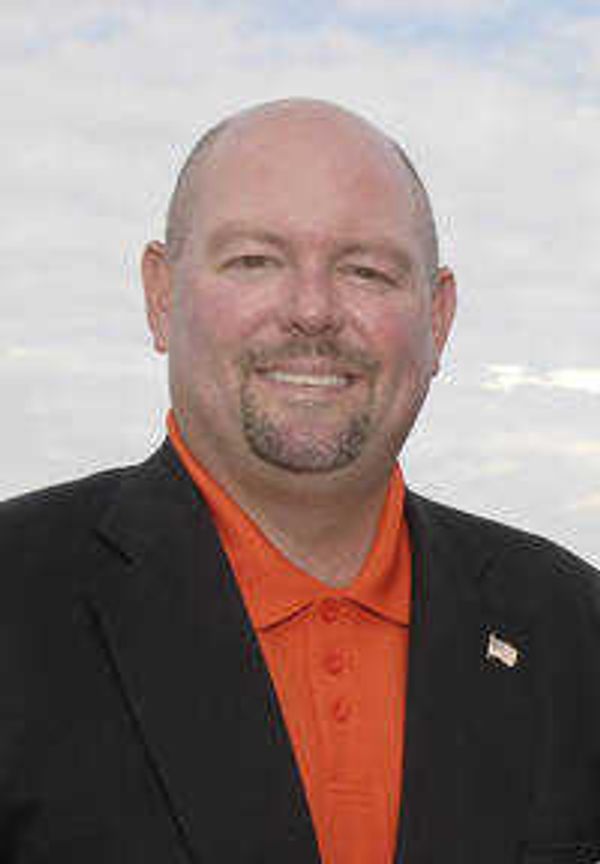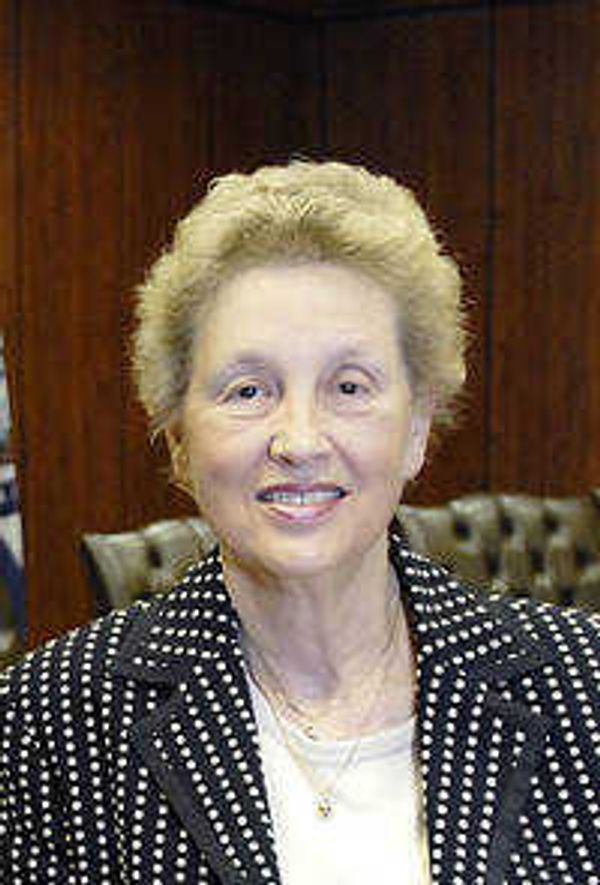View point
By jay knudtson Special to B usiness Today Presiding Commissioner Gerald Jones first coined the phrase "love-fest" when ground was broken for the new Interstate 55 interchange that will connect East Main Street to Jackson and LaSalle Avenue to Cape Girardeau. He is affectionately referring to this as a "love-fest" because of the unprecedented relationship that was established between Jackson, Cape Girardeau, Cape Girardeau County, Southeast Missouri State University and MoDOT...
The love-fest is not over -- it's all about a proper courtship
By jay knudtson
Special to Business Today

Presiding Commissioner Gerald Jones first coined the phrase "love-fest" when ground was broken for the new Interstate 55 interchange that will connect East Main Street to Jackson and LaSalle Avenue to Cape Girardeau. He is affectionately referring to this as a "love-fest" because of the unprecedented relationship that was established between Jackson, Cape Girardeau, Cape Girardeau County, Southeast Missouri State University and MoDOT.
Now, as the interchange moves rapidly toward completion, the discussion and focus has transitioned as to how the adjoining corners will be developed and whether or not Cape Girardeau and Jackson should enter into some type of "revenue sharing" agreement. I in no way claim to be an expert or authority on this topic but, at the request of Business Today, I will share some general comments and observations on the issue:
- The "revenue sharing" concept: This is an arrangement that is not only new to our area but to the entire state. Actually, legislative language was amended within the last year to even allow for bordering municipalities to enter into such an arrangement. While it appears to have some conceptual merit, I also believe it could contain some hidden elements and uncertainties that may prove to be risky for Cape Girardeau. Sales tax revenue is the "life-blood" of Cape Girardeau's budget, and today our financial position is as strong and healthy as it has ever been. It, therefore, becomes our responsibility to make sure that we preserve and protect this revenue that is absolutely essential to us. Any lost revenue or cannibalization of existing revenue could cause us to go in a direction that would be detrimental and simply unacceptable.
That being said, I find it very difficult to ever envision having enough "protective language" included in one of these arrangements to satisfy the leaders of both Cape Girardeau and Jackson. The concept of "revenue sharing" is to create a district that would exist within the city limits of both Cape Girardeau and Jackson. The taxes that are collected within this district would then be split between the two cities. Again, conceptually this may appear to be a fair and equitable arrangement but we must look deeper. What if a retailer who already exists in Cape Girardeau chooses to relocate to this new development? Cape would then be sharing critical revenue and very possibly be going backward. What if an existing retailer chooses to open up an additional store at this new development? One can reasonably conclude that some of the existing store sales would be transitioned to the new store and Cape Girardeau could very possibly once again, lose vital revenue due to the sharing arrangement. These are but a few of the potential pitfalls that exist within this very complicated and risky arrangement.
In addition to the potential risks, I believe that we need to recognize that Cape Girardeau and Jackson are two communities with different economic drivers that support our respective budgets. Because of their very natures, to think that we are ever going to get these two very proud and distinct communities to agree on this very complicated and unpredictable arrangement is an unrealistic expectation. I believe Mayor Lohr, her aldermen and staff need to recruit, incent and negotiate with prospective developers in a way they feel appropriate, and Cape Girardeau will do the same. Successful recruitment and development on the Jackson side will translate into successes on the Cape side -- and vice versa.
- The 10,000 Pound Gorilla -- Now, enter the "Wal-Mart Factor": I maintain that we need not hold ourselves hostage to the 10,000 pound gorilla. We have a highly visible and marketable interchange that will build out with or without Wal-Mart. Wal-Mart currently has two very successful stores that serve the citizens of Cape Girardeau and Jackson very well. It will be Cape Girardeau's strategy to not focus on Wal-Mart but rather to focus on new and nonduplicative retailers...(how cool would a new Bass Pro be?). Under these circumstances, creative and aggressive incentive tools may be warranted.
- Exciting opportunity: The good news is that Cape Girardeau's success or future is not dependent on the rapid build-out of this interchange. The questions we will be asking ourselves are: How big do we want to dream? What is our threshold for incentives? And how do we best make sure we grow our existing retail tax base?
Contrary to what some have said, the "Love-fest" is not over. The cooperative spirit has served us well and we will all benefit from this beautiful new interchange. Let's just say the development and build-out of the interchange will closer reflect that of a "Courtship" where we will all "trust, but verify."
Jay Knudtson is the Mayor of Cape Girardeau
---
Jackson ready to chart own path at East Main Street
By Barbara Lohr
Special to Business Today

In the early 1970s, East Main Street ended at Bellevue Street in Jackson. But even then former Mayor Carlton "Cotton" Meyer and former city administrator Carl Talley had a vision. They were aware of the need to extend East Main Street all the way to Interstate 55 and the need for another interchange to better move traffic through the city. They began discussions to have this project made a priority.
Shortly after these discussions were started, the Community Betterment Association, through the Jackson Chamber of Commerce, performed a needs study regarding transportation in Jackson. The needs study strongly encouraged extending East Main Street to I-55 and looking at the possibility of an interchange for Jackson.
The Federal Aid to Urban Highways allocated money for Jackson based on population, and the city set a priority for the use of that money was to extend East Main Street to Shawnee Boulevard. Following that project, the engineering firm of Bowen and Lawson was hired to study a corridor for extending East Main Street to I-55.
When Paul Sander became mayor in 1993, the project took on even more significance. In early 1994, Mayor Sander, City Administrator Talley, and Alderman Dave Reiminger attended a meeting of the Highways and Transportation Commission in Van Buren, Mo. They made a short presentation asking the commission to study the possibility of an I-55 interchange to connect with East Main Street. This was the first official communication with MoDOT regarding this project.
Mayor Sander and the city continued to petition MoDOT about the project. Eventually, MoDOT agreed to build the interchange, but it was unfunded, meaning the city would have to pay for it.
Jackson continued seeking support for the project. Newly-elected Cape Girardeau Mayor Al Spradling III was quick to realize the potential of such an interchange for the region and offered general support for the project. In September 1994, the Cape Girardeau County Commission endorsed the project.
In addition, the area Transportation Advisory Committee selected the interchange project as the top priority for Cape Girardeau County. The SEMO Regional Planning Commission was also very supportive and was instrumental in presenting programs and educational information to local legislators to make them aware of the regional concept of the project.
Shortly after, the Southeast Missouri State University's Board of Regents began discussions about converting the university farm land near the proposed interchange into a life science research park.
Mayor Sander and Mayor Spradling continued to stress the regional concept to MoDOT and the benefits for four entities -- the cities of Jackson and Cape Girardeau, Cape Girardeau County, and the university. MoDOT agreed to fund 50 percent of the interchange. Jackson began the various phases to extend East Main Street, with the next phase being from Shawnee Boulevard to Oak Hill Road.
However, Jackson still could not afford to pay for half the cost of an interchange that would benefit all four entities. Cape Girardeau Mayor Jay Knudtson picked up where former Mayor Spradling left off by offering some financial support. Eventually the representatives of each participating government body offered their cooperation for the funding for the project.
Jackson and Cape Girardeau, Cape Girardeau County, and the university began working on an intergovernmental agreement that would spell out the terms for funding 50 percent of the interchange, with MoDOT providing the other 50 percent of the funding. With the intergovernmental agreement still in the works after many meetings and hours of work, a $10.8 million allocation was secured through the joint efforts of U.S. Sen. Kit Bond, then-U.S. Sen. Jim Talent, and U.S. Rep. Jo Ann Emerson.
This allocation completed funding for the interchange and also allowed partial funding so the partners in this project could begin design and construction of the outer roads from the new interchange to the existing interchange at Center Junction.
While this project began as a transportation project to better facilitate the flow of traffic through the city, no one would dispute the fact that better traffic flow patterns, better streets, and infrastructure will almost certainly be a big economic advantage.
Jackson has now completed the extension of East Main Street to the interchange. With the increased traffic flow along this route, additional development has already begun. Property owners adjacent to the interchange are attending meetings and looking at possible designs for the outer road. Jackson has a Tax Increment Financing district already in place for most of this property, which should facilitate development on the west side of the interchange.
Jackson has also established an Enhanced Commercial Overlay Zoning District to be applied in the interchange area and a portion of the new East Main Street corridor. It is designed to provide an aesthetically pleasing entrance into the City and protect residential property in the immediate area.
With the assistance and cooperation of its developers, the residents of adjacent neighborhoods, the city staff, members of Planning and Zoning Commission, and board of aldermen, Jackson is shaping the interchange area in a way which benefits everyone.
While revenue sharing at one time was considered favorably from our standpoint, and we did think of this in the very beginning as a regional concept, Mayor Knudtson was very emphatic that revenue sharing was not going to happen.
If there is a time on down the road where we need to look at other elements of cooperation, as a regional concept, we will certainly be happy to have discussions about whatever is necessary.
Barbara Lohr is the mayor of Jackson.
Connect with the Southeast Missourian Newsroom:
For corrections to this story or other insights for the editor, click here. To submit a letter to the editor, click here. To learn about the Southeast Missourian’s AI Policy, click here.







